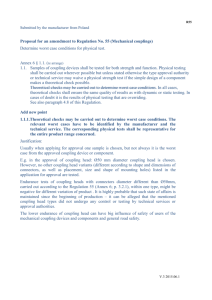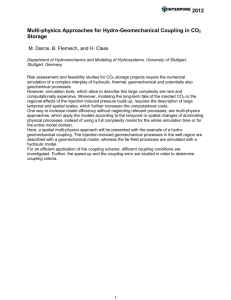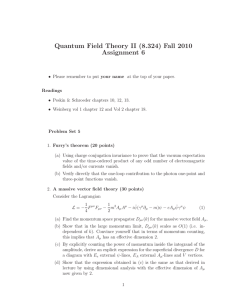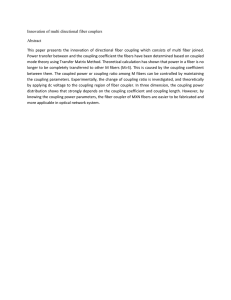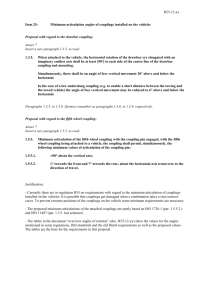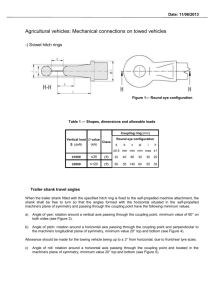R55_07_18-Item_20-reduced_speed_Orl…
advertisement
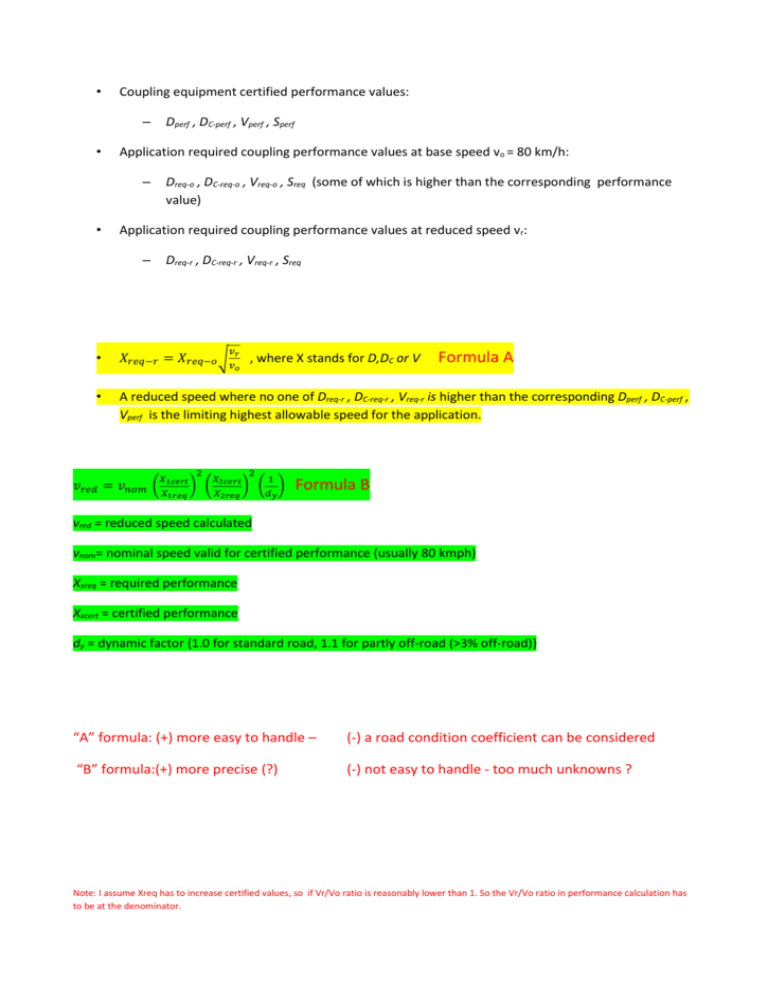
•
Coupling equipment certified performance values:
–
•
Application required coupling performance values at base speed vo = 80 km/h:
–
•
Dperf , DC-perf , Vperf , Sperf
Dreq-o , DC-req-o , Vreq-o , Sreq (some of which is higher than the corresponding performance
value)
Application required coupling performance values at reduced speed vr:
–
Dreq-r , DC-req-r , Vreq-r , Sreq
𝑣
Formula A
•
𝑋𝑟𝑒𝑞−𝑟 = 𝑋𝑟𝑒𝑞−𝑜 √𝑣𝑟 , where X stands for D,DC or V
•
A reduced speed where no one of Dreq-r , DC-req-r , Vreq-r is higher than the corresponding Dperf , DC-perf ,
Vperf is the limiting highest allowable speed for the application.
𝑜
2
𝑋
2
𝑋
1
𝑣𝑟𝑒𝑑 = 𝑣𝑛𝑜𝑚 ( 𝑋1𝑐𝑒𝑟𝑡 ) ( 𝑋2𝑐𝑒𝑟𝑡 ) (𝑑 )
1𝑟𝑒𝑞
2𝑟𝑒𝑞
𝑦
Formula B
vred = reduced speed calculated
vnom= nominal speed valid for certified performance (usually 80 kmph)
Xxreq = required performance
Xxcert = certified performance
dy = dynamic factor {1.0 for standard road, 1.1 for partly off-road (>3% off-road)}
“A” formula: (+) more easy to handle –
(-) a road condition coefficient can be considered
“B” formula:(+) more precise (?)
(-) not easy to handle - too much unknowns ?
Note: I assume Xreq has to increase certified values, so if Vr/Vo ratio is reasonably lower than 1. So the Vr/Vo ratio in performance calculation has
to be at the denominator.
Speed limits according to European Regulation, concerning vehicles and exceptional
transport:
1. Trailer mass between 42,6 and 80 t =
2. Trailer mass over 80 t =
62,5 Km/h
40 Km/h
Xreq-r (1) = 0,88
Xreq-r (2) = 0,71
i.e. Class C50-7 coupling , from R55.01 as it is now
80 km/h
D(KN)
Dc (KN)
V (KN)
190
120
50
62,5 km/h
Formula A Formula B
215 (*)
215
136 (*)
?
56 (*)
?
40 km/h
Formula A
Formula B
267 (*)
268
169 (*)
?
70 (*)
?
(*) values “rounded down”
Annex 6 (Testing of mechanical coupling devices or components) does not need to be amended.
Characteristic values can be “upgraded” according to Vr/Vo ratio;
Different values can be reported on approval certification and on the product (on the approval
label);
Vr/Vo ratio correction can be applied for every class of coupling system;
Is there a “correcting factor” (as Vr/Vo ratio) in braking regulation for exceptional vehicles and
transport in reduced speed condition?
Conclusion : To me it seems to be more convenient to establish
fixed speed, and correct coupling system accordingly. On the
approval and on the label must be indicated 3 different
“parameter sets”, related to 3 different fixed speed.





